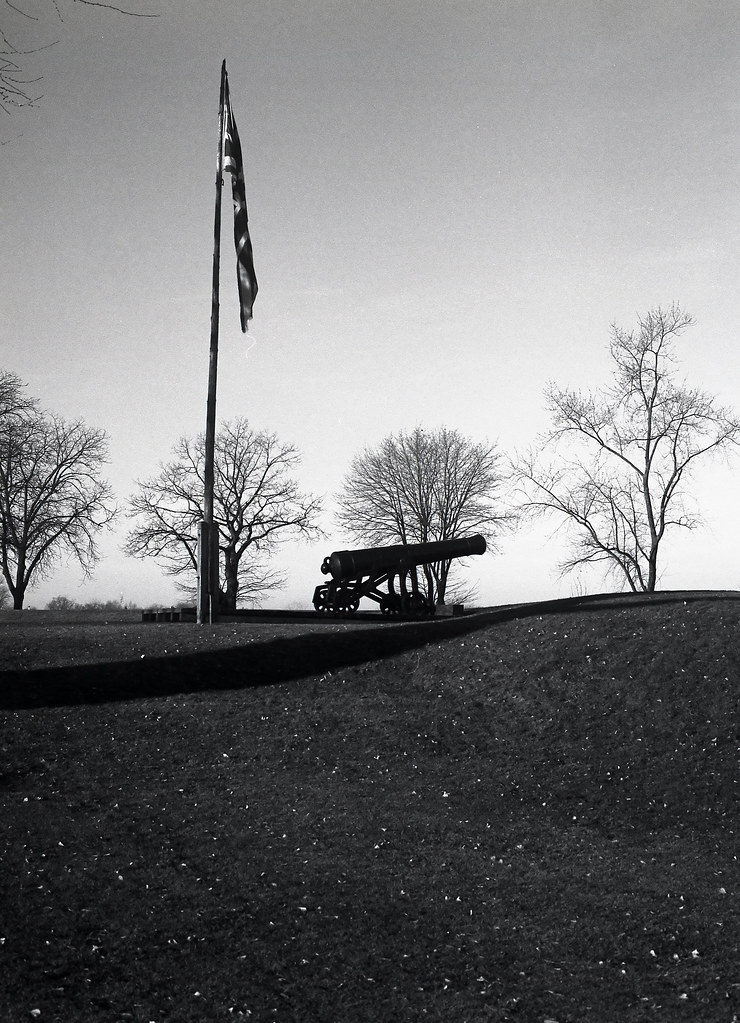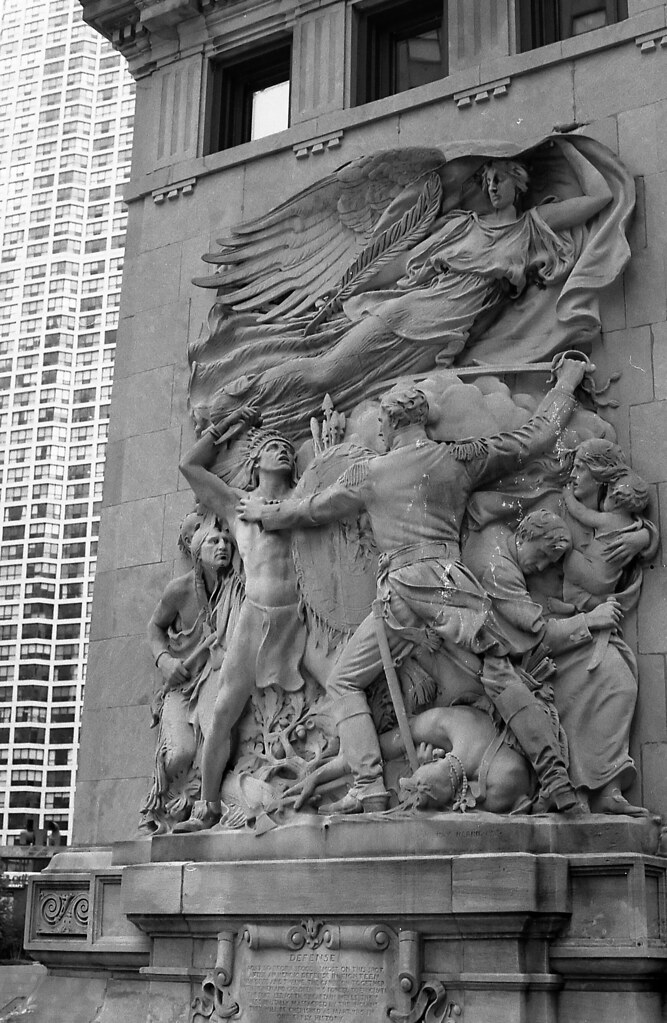There are many who served in the War of 1812 that made a name for themselves, some positive and on which history smiled upon, and those whom history was not as kind to. American lawyer, politician, and hero of the American Revolution William Hull is one such men. Born in 1753 in Derby Connecticut, Hull’s goal was to become a lawyer, studying law and graduating from Harvard in 1772 and then passed the bar in 1775. The start of the American Revolutionary war brought him to join the patriot militia, quickly rising to the rank of Lieutenant-Colonel by 1785. His prowess in battle was noted by George Washington himself after Hull proved himself a commander of men in the battles of White Plans, Trenton, Saratoga, Still Water, Stoney Point, Fort Stanwix, and Monmuth.

Sitting among larger buildings, the François Baby House now serves as a regional museum.
Nikon F4 – Nikon Series E 28mm 1:2.8 – Agfa APX 100 – Kodak Xtol (1+1) 9:45 @ 20C
It was the words of President George Washington, that prompted President James Madison to grant Hull the position of governor of the Michigan Territory of 1805. Hull’s duty was to secure land for the expanding United States from the many native tribes that occupied the area. Hull was the one that brokered the Treaty of Detroit in 1807, a treaty that the Shawnee Chief Tecumseh and his brother denounced, and brought many more of the displaced Michigan natives to head south to join the native confederacy being formed in Indiana Territory. As tensions continued to rise between the United States and the British Empire and the War Hawks rattling the sabre in Washington DC, President Madison offered the 60-year old governor the rank of Brigadier General and command of the Army of the Northwest, it took much persuading but Hull finally accepted the command and headed for Cincinnati to collect the militia and army. Should war be declared, Hull was to invade and take Fort Amherstburg in the west of Upper Canada.

A cannon mounted at Fort Malden, which replaced Fort Amhurstburg in 1813 after the British destroyed it ahead of Harrison’s landing.
Pentax 645 – SMC Pentax A 645 75mm 1:2.8 – Kodak Tri-X Pan (320TXP) – Kodak HC-110 Dil. B 5:30 @ 20C
But news of the declaration of war failed to reach Hull in time to take the needed precautions, and he soon found his baggage and war plans in the hands of the British, he still took his 2,000 strong army across the river and occupied the village of Sandwich. But the once cunning commander had grown cautious in his old age and failed to push his attack, and eventually fell back to Fort Detroit after the arrival of British reinforcements. It became bad enough that his own subordinate officers were opening discussing his removal from command. Hull’s paranoia was his eventual undoing, when faced with both real and false information, Hull went with the false information and fell into the British trap and surrendered Fort Detroit and all the troops within and without. Hull along with the rest of the regular forces were sent as prisoners of war to Quebec City where he would remain until the end of the war, eventually being released in a prisoner exchange.

The Battle of Fort Dearborn was a direct result of Hull’s orders to pull out the garrison there.
Nikon FM2 – AI-S Nikkor 50mm 1:1.4 – Kodak Tri-X 400 (400TX) – Kodak HC-110 Dil. B 4:30 @ 20C
Hull was arrested and brought to court martial on five charges, only four of which he was found guilty, the charges of cowardice and neglect of duty in regards to the surrender of Detroit, the sentence carried a penalty of death. Hull was only saved by a pardon by President Madison, citing the man’s actions during the Revolution. Hull however was stripped of all ranks and titles and retired to Newton, MA. His wife, Sarah Fuller, his only ally and worked to clear his name. She published two books, but it was her second book, Memoirs of the Campaign of the North Western Army of the United States: AD 1812 that was published in 1824 that caused the public opinion to swing back into his favour, enough so that on the 30th of May, 1825 a dinner was held in his honour. Hull passed away on the 30th of November that same year.

The marker for the Capture of Detroit by British forces, Hull’s fatal mistake.
Nikon F4 – Nikon Series E 28mm 1:2.8 – Afga APX 100 – Kodak Xtol (1+1) 9:45 @ 20C
While history continues to sit on the fence about William Hull, laying the blame at his feet for his failures in the war, Hull it seemed was backed into a corner. He was far too old to lead such an attack, but early in the War, the Army had few officers of experience in its ranks. Hull also lacked the required number of trained troops, and lack of equipment to conduct an invasion, plus the failure to communicate the situation in a quick manner. It almost seemed that the government that would condemn Hull set him up to fail in the first place. Hull however does hold the distinction of being the only American flag officer to have been sentenced to death.
Written With Files From:
Web: www.britannica.com/EBchecked/topic/275269/William-Hull
Web: www.military.com/Content/MoreContent?file=ML_whull_bkp
Web: www.eighteentwelve.ca/?q=eng/Topic/10
Web: www.1812ontario.ca/history/important-people/william-hull/